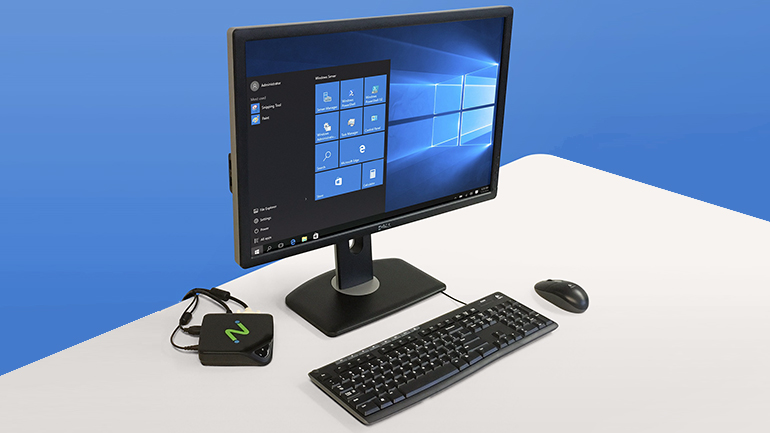'ZDNET Recommends': What exactly does it mean?
ZDNET's recommendations are based on many hours of testing, research, and comparison shopping. We gather data from the best available sources, including vendor and retailer listings as well as other relevant and independent reviews sites. And we pore over customer reviews to find out what matters to real people who already own and use the products and services we’re assessing.
When you click through from our site to a retailer and buy a product or service, we may earn affiliate commissions. This helps support our work, but does not affect what we cover or how, and it does not affect the price you pay. Neither ZDNET nor the author are compensated for these independent reviews. Indeed, we follow strict guidelines that ensure our editorial content is never influenced by advertisers.
ZDNET's editorial team writes on behalf of you, our reader. Our goal is to deliver the most accurate information and the most knowledgeable advice possible in order to help you make smarter buying decisions on tech gear and a wide array of products and services. Our editors thoroughly review and fact-check every article to ensure that our content meets the highest standards. If we have made an error or published misleading information, we will correct or clarify the article. If you see inaccuracies in our content, please report the mistake via this form.
NComputing vSpace Pro 10 review: VDI made easy and affordable


NComputing vSpace Pro 10
pros and cons
- Single host Windows OS
- Fast and easy installation
- Less complex and more affordable than hypervisor-based VDI
- Multiple management interfaces are confusing
- Limited desktop customisation
- vCast Web Streaming limited in scope
- Thin clients from other vendors are not supported
With the launch of vSpace Pro 10, desktop virtualisation specialist NComputing has updated its VDI (Virtual Desktop Infrastructure) platform to make it better suited to today's market. To this end, it has added support for the latest Windows 10 releases, and simplified and redesigned its management interfaces, with an all-new cloud-based portal also available for the first time. Optional Premium features will also be available to further enhance functionality, starting with vCast, a new streaming technology to better handle playback of HD video and, as a result, support more vSpace users per server.
Virtual desktops not machines
To fully appreciate what vSpace Pro has to offer, you have first to understand how it differs from the hypervisor approach to VDI, where each user gets remote access to their own individual virtual machine (VM). Hosted on a central server, this gives each user guaranteed memory and compute resources plus their own copy of Windows. They can also install their own applications, even crash and reboot their desktop VM without affecting others. All this comes at a cost in terms of both hardware and licensing requirements, and deployment and management overheads can be significant -- just think of having to update hundreds of VMs every time Microsoft issues a new patch, for example.
The vSpace approach is, instead, to make use of Windows Remote Desktop Services (RDS) to virtualise just the desktop. This requires a single copy of Windows (on the host server), making for much faster deployment and easier management, although users don't have as much independence and flexibility as with a virtual machine setup. AS a result, it's a more suitable solution for the schools, colleges and small businesses that make up NComputing's main customers.
Low purchase and management costs compared to hypervisor-based VDI are a key selling point here, added to which NComputing reckons that the lower processing overheads of a vSpace Pro server enable it to handle between four and ten times as many clients. Moreover, it costs nothing to download and install the core vSpace Pro 10 software, as Ncomputing makes most of its money through the sale of custom thin-client devices designed specifically to work with vSpace servers using its proprietary UXP protocol.
Dedicated thin-client devices, like this compact NComputing L350 attached to the back of a flat-panel display, are available to work with vSpace Pro 10.
Alternatively it's possible to repurpose existing Windows PCs (64-bit Windows 7 or later) and, now, Google Chromebooks by downloading vSpace Pro software clients available for both platforms. Client licenses for either of these cost $50 a year each, with a half-price offer running until the end of 2016.
The vSpace Pro client app enables Chromebook users to run Windows (in this photo we're connected to a Windows 7 server).
You also have to pay for any Premium feature add-ons such as vCast, while the only other expense is the need for Client Access Licenses (CALs) in order to use Windows RDS, although these are perpetual with no annual renewal required.
Getting started
Fast installation has always been a feature of NComputing's VDI solution, and we got our test environment up and running in just a few minutes. Rather than have to create VMs and install a desktop OS for each of our test users, we simply downloaded the software, then ran a standard Windows setup routine to install on our chosen server. This can be any computer running Windows, even a desktop, although you're advised that this is only for one-to-one remote access rather than desktop sharing. For multiple users Windows Server is required, with support for Windows Server 2016 included in the new update. Multiple servers can be configured to share the workload on large deployments. Older Windows Server 2008 and 2012 platforms can also be used.
Top ZDNET Reviews
The management interface is clear, consistent and easy to use -- although there are three separate tools to contend with, which we found a little confusing. The first of these, vSpace Console, is used to centrally manage vSpace servers and devices, monitor and control user sessions, and perform device management tasks remotely such as firmware updates and rebooting.
The vSpace Console is used to manage servers, devices and sessions.
Separate from this, vSpace Manager is used to locally allocate software licence seats and manage licensing of premium features across connected vSpace servers. By default, installs on the vSpace Server host that it manages; for larger deployments a single vSpace Manager can also be used to manage the licensing of multiple vSpace Servers located on different hosts.
Not to be confused with the almost identical vSpace Console, vSpace Manager is mostly used to manage client and Premium feature licenses.
As if all that wasn't enough, as part of the vSpace Pro 10 release NComputing is also delivering a more general cloud-based management portal that can be accessed from any browser to purchase software and manage licenses remotely. This doesn't duplicate all the features of the local management tools, but does let you manage licensing remotely and will be used to provide access to additional features and new options as and when they become available.
The NComputing Management Portal allows for remote purchase and management of software licences.
vCast streaming
The last piece of the vSpace Pro 10 release is the new vCast streaming technology, which is designed to reduce the overheads involved in streaming high-resolution video to vSpace clients. It does this by streaming direct to the vSpace client, bypassing the host vSpace server to provide a more consistent quality of service and, according to Ncomputing, support up to six times more users per server.
The results are impressive, but this first implementation is limited to streaming YouTube content only, and is dependent on an add-in to the Chrome browser. It also only works with software clients and not NComputing thin-client devices at present.
Additional functionality can be added in the form of Premium Features, starting with vCast Web Streaming.
Available for a 90-day trial and $99 a year per server thereafter, vCast Web Streaming is the first of a number of so-called Premium Features with more general media streaming due to be added soon. Other planned features include Health Monitoring to remotely monitor usage and, especially for the education market, a Classroom Management tool to control what students can see, do and share from their desktops.
Target market
Education is very much the target market for NComputing products, and it's ideally suited to vSpace Pro, which is in a different league to hypervisor-based VDI alternatives in terms of both cost and simplicity. Support for Windows 10 and Server 2016 are welcome additions and the management interface is easy to master even if it's a little confusing to begin with. The fact that you get everything needed for VDI in one package is another bonus and we were impressed with just how easy it was to get everything working -- which will also be important when selling to small businesses with limited technical resources.
The vCast streaming feature is an interesting and welcome new option, but seems to be a work in progress that really needs to be more widely supported on thin clients to be of real use. Likewise, other promised Premium features look like they will add value when released. In the meantime, vSpace is a very usable VDI solution, with even more to recommend it in this vSpace Pro 10 update.
Read more reviews